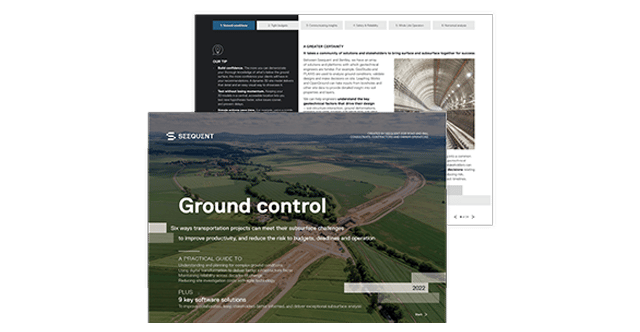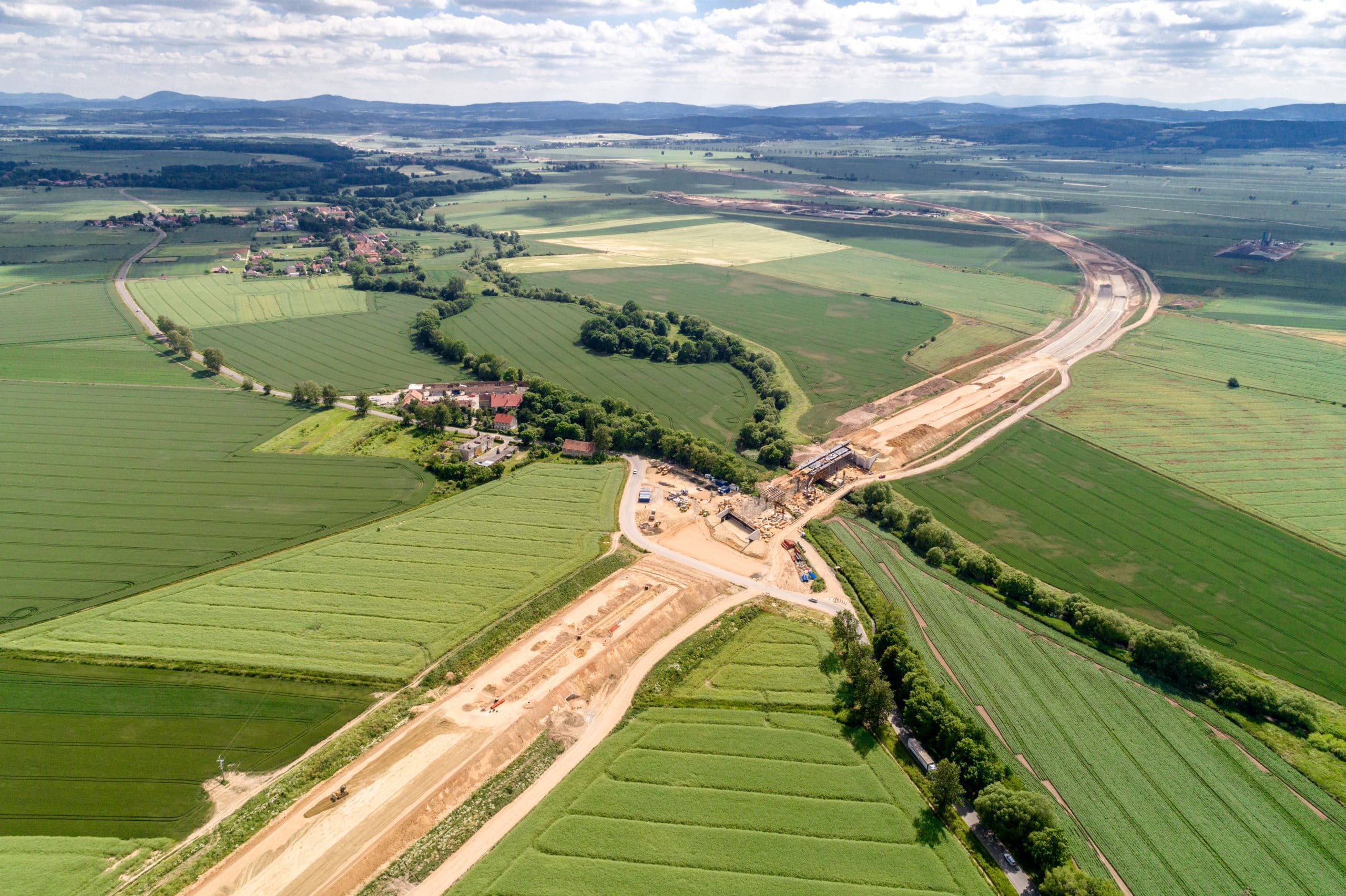Transportation infrastructure presents some of the most diversely complex challenges in ground engineering – and they’re not getting any easier. A next generation step in insight and oversight is needed for everyone involved, argues Pat McLarin, Seequent’s Civil Segment Director.
We’ve seen the agile thinking our solutions empower shave more than £10m and a year’s worth of construction time off just one section of the line alone…
There can be few infrastructure undertakings that pose as many challenges, for as many parties, as road and rail construction.
These long, linear, complex schemes traverse constantly changing terrain, often require a slew of tunnels and bridges, and must negotiate invariably controversial routes through cities and across countryside. They’re expected to do all this while maintaining minimum environmental impact, sticking to a deadline, and answering for every penny of public money spent. The fact they get finished at all is thanks to near heroic efforts from those involved.
While these are not new problems, the degree of complexity, scrutiny and multi-disciplinary collaboration involved to achieve success in transportation infrastructure today has reached unprecedented levels. Yet in some instances, the technological solutions that should be helping project owners and engineers to work more closely together are actually keeping them apart.
Siloed software and data formats with the need for domain specific expertise, but with workflows that don’t work together, undermine the collaborative environment that contractors and owners need in order to make confident decisions quickly in the face of changing situations on the ground.
Don’t let shifting ground conditions unsettle plans and partners
And the ground can be the guilty party here. Unforeseen subsurface conditions are the major cause of delays and budget overruns in transportation ventures 1 . They impact plans as much as any other element during construction, and this shouldn’t be surprising. Predicting the ground conditions is an interpretive process; you are slowly uncovering an understanding of the subsurface as you go and piecing together the puzzle of how your road or rail project will navigate it as your understanding changes.
At the beginning of any project, there is a distinct lack of certainty. You’re theorising about what’s below the surface – probably with much less data than you’d prefer – and trying to build a picture you can work with. It’s unavoidable. But what should be avoidable is the way that subsurface surprises bring projects to a grinding halt and confound stakeholders as they struggle to agree on an answer. Too often it’s the lack of a common view of the problem that stops them being on the same page and seeing the same route forward.
Democratisation of data
The ability to make any new information instantly understandable, by everyone, wherever they are, as soon as it arrives – has become increasingly critical for on- time, on- budget completion of transportation infrastructure schemes. It’s why we’ve brought together our portfolio of geoscience products to deliver a robust solution to your Transportation project challenges – solutions that deliver 3D visualisation, geological models and data management, all in one place, connected by the Cloud.
This innovative approach improves oversight and understanding for project owners; enhances productivity and cost control for managers; and strengthens analysis and collaboration for engineers and geoscientists. With good reason: the challenges they face grow tougher by the day.
Bringing together insight and oversight for a better result
Project owners are charged with getting the best value for public money while juggling a raft of stakeholder, community, and environmental concerns. Pushing all the ground risk onto the contractor will result in more conservative pricing, and yet may not drive better outcomes for the project or the planet.
Sharing the risk however, requires a common and transparent understanding of the subsurface conditions at any given point. Engineers, consultants, and contractors must therefore coalesce all their ideas and disciplines in a collaborative approach to ground conditions. They need geological models that can be constantly updated by new information, coming from the field in near real- time, and owners and their technical advisors need clear and detailed geotechnical oversight into the performance of the project delivery team that stays in touch with the project as it evolves. Once construction is complete, owners need to inherit a data -asset that includes all the learnings about the ground conditions to help them run their infrastructure asset safely and reliably for decades to come.
This evolving view that reacts rapidly, encourages transparency, counteracts silo-ed thinking and enhances oversight is at the heart of Seequent’s solutions for transportation. It’s also centralised and auditable, giving owners the detailed, geotechnical record they need to operate their asset confidently (for example, when climate change throws ever harsher punishment at it).
Improved subsurface certainty reduces costs and shorten timelines
And it works. In projects like the UK’s HS2 High Speed rail line, we’ve seen the agile thinking our solution enables to shave more than £10m and a year’s worth of construction time off just one section of the line alone…
At Seequent, we’ve been bringing clarity to complex subsurface challenges since the early 2000s. For us there’s no doubt that transportation infrastructure in the 2020s will confront ever more hoops to jump through to be judged successful. Projects are becoming more technically challenging, the number of stakeholders with competing concerns is growing, and budgetary restraints will only ever tighten, while the carbon footprint of moving more earth or using more concrete than truly required is our collective responsibility to avoid.
Managing data, partners and expectations has never been harder, which is why we think solutions that establishes the next generation of subsurface insight and collaboration are a vital tool in the kit bag of anyone building roads or rail lines today.
Learn more about Seequent’s Solutions for transportation projects






